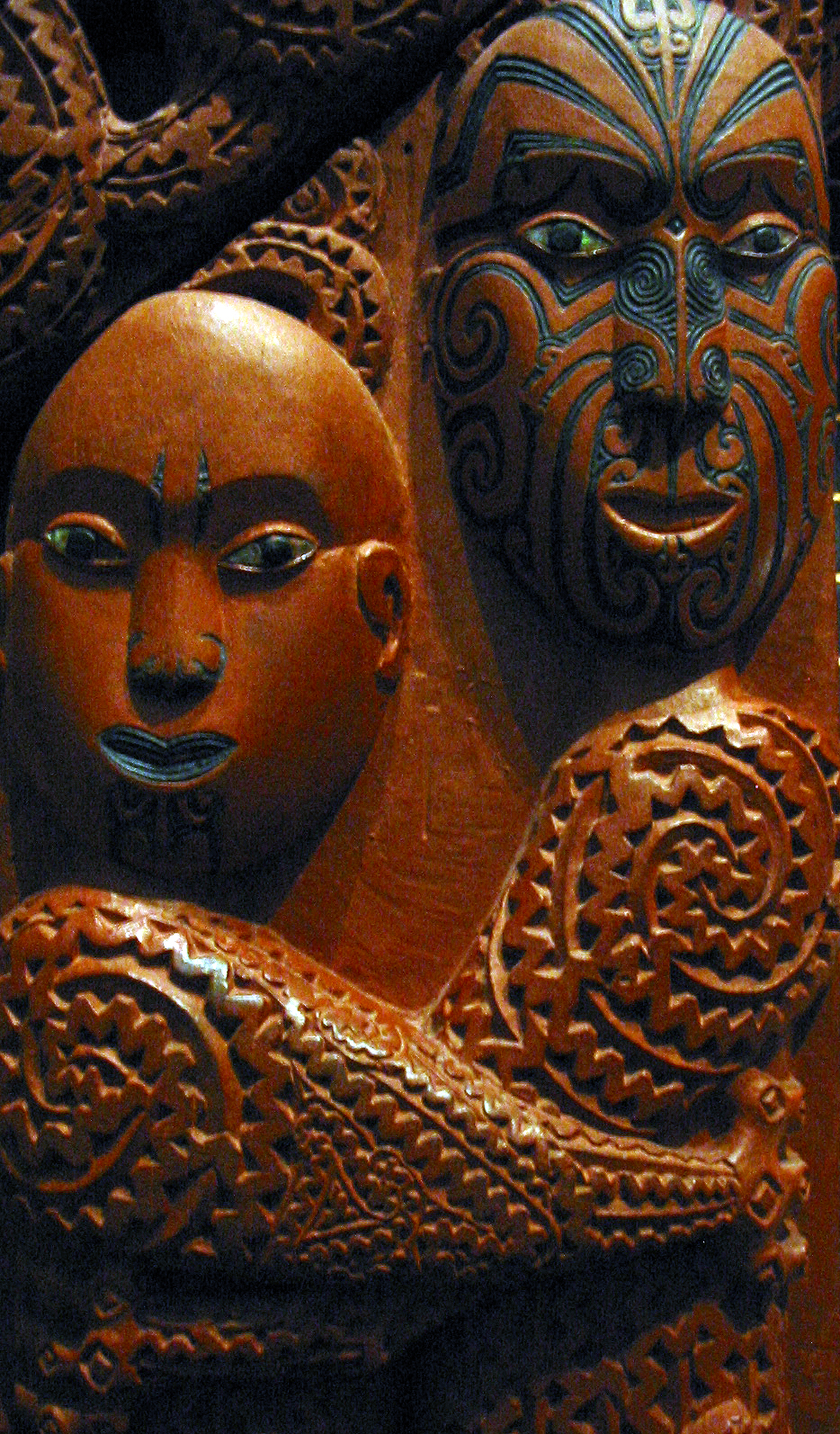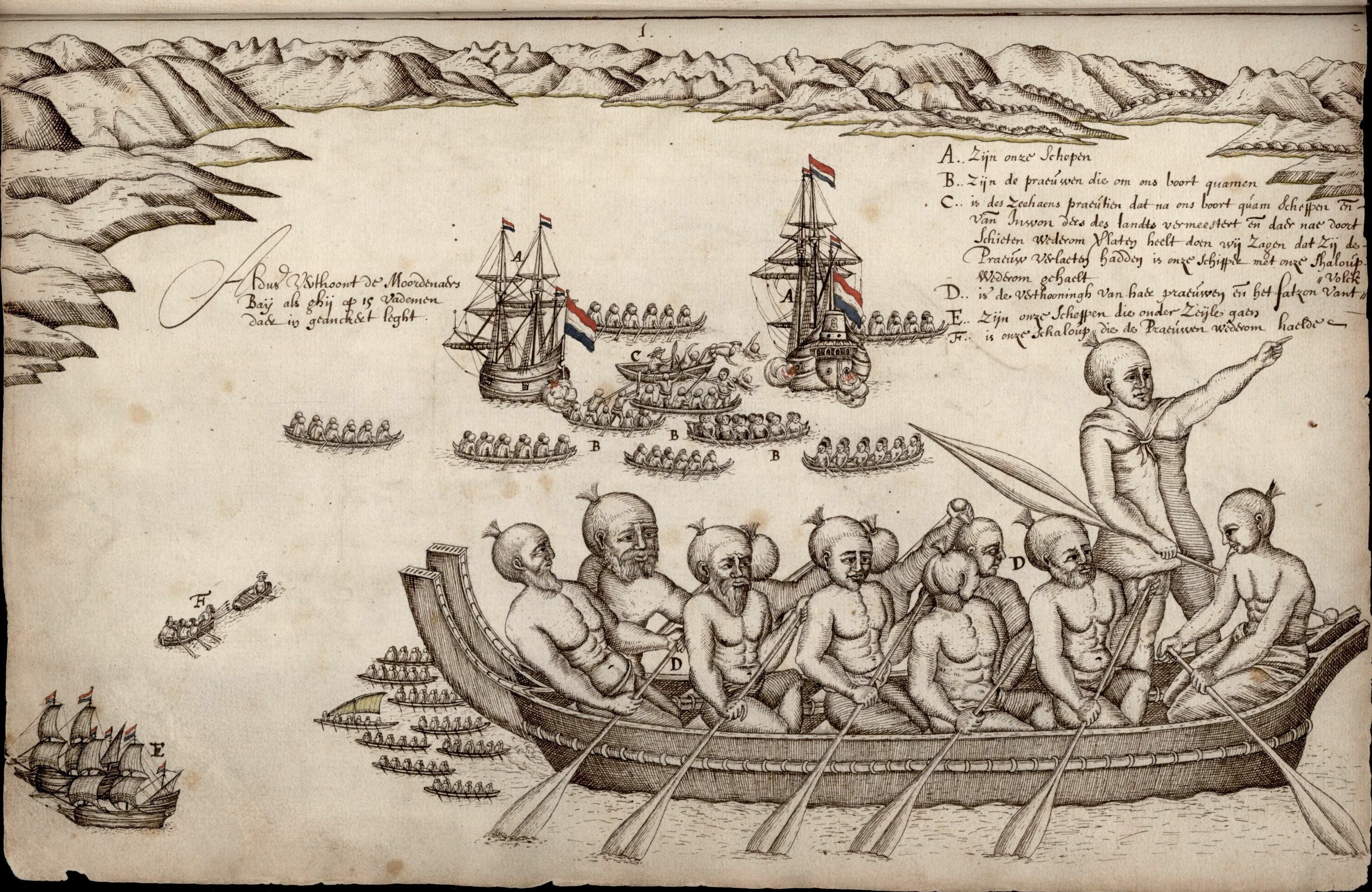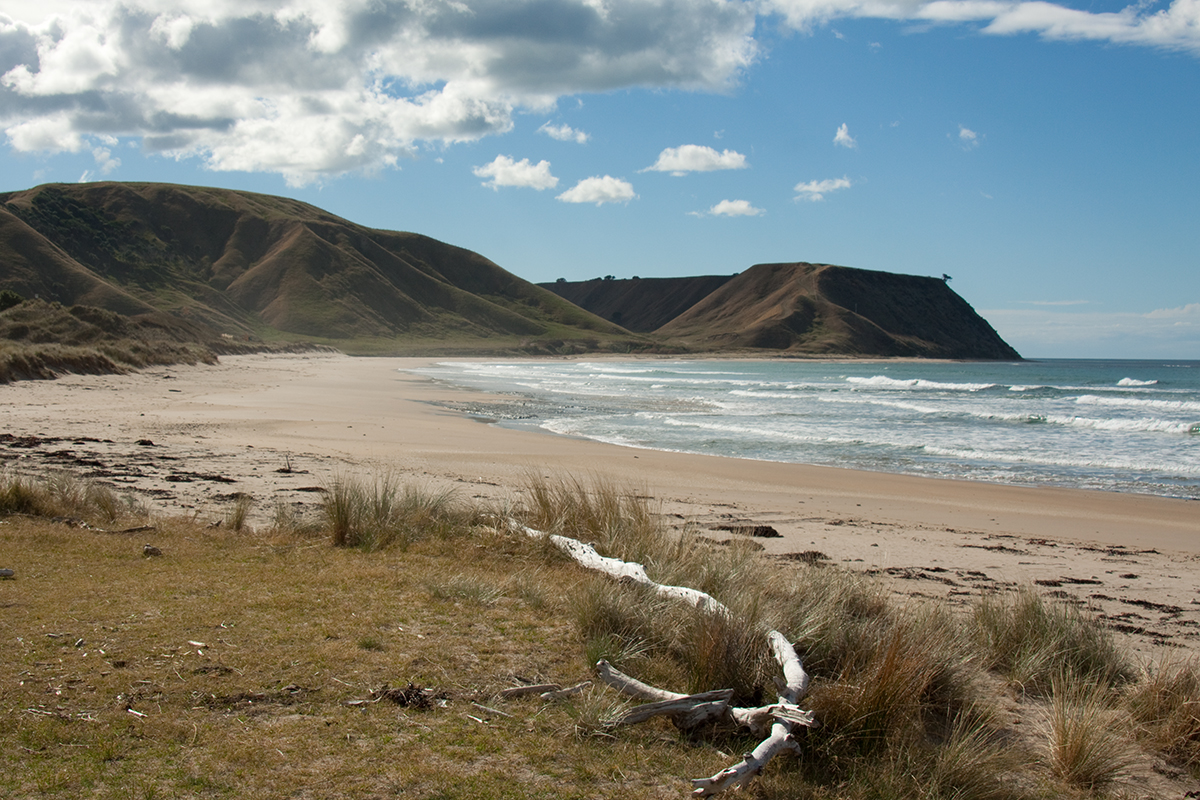|
Haumia
Haumia-tiketike (or simply Haumia) is the god of all uncultivated vegetative food in Māori mythology. He is particularly associated with the starchy rhizome of the '' Pteridium esculentum'', which became a major element of the Māori diet in former times. He contrasts with Rongo, the god of and all cultivated food plants. In different tribal and regional variations of the stories involving him, he is often portrayed as the son or grandson of Ranginui. He is frequently associated with traditions of the world's creation, in which he agreed to and attempted the separation of Rangi from his wife Papa. creation myth After Haumia agreed to Rangi and Papa's forced separation in order to allow light and space into the world between them, he was the third child to attempt to push them apart with his arms. Despite Tāne being the one to successfully carry out the task, Haumia's involvement meant he was subjected to the fury of their brother, Tāwhirimātea, god of the winds and sto ... [...More Info...] [...Related Items...] OR: [Wikipedia] [Google] [Baidu] |
Atua
Atua are the gods and spirits of the Polynesian people such as the Māori or the Hawaiians (see also ). The literal meaning of the Polynesian word is "power" or "strength" and so the concept is similar to that of '' mana''. Many of the atua that are known have originated from myths and legends of each Polynesian culture before Christianity was introduced. These days, the word atua is related to the monotheistic conception of God. However for Polynesian cultures, as opposed to having only one superior god, there are multiple atua. For Māori, there are eight main atua – excluding the parents, Ranginui (sky father) and Papatūānuku (earth mother): * '' Tāne Mahuta'' – god of the forest and all forest creatures such as animals, birds and trees; * Tāwhirimātea – god of wind and storms; * Haumia-tiketike – god of uncultivated food and fernroot (also known as Haumia, Haumia-tikitiki, and Haumia-roa); * '' Rongo-mā-Tāne'' – god of Agriculture and Peace (a ... [...More Info...] [...Related Items...] OR: [Wikipedia] [Google] [Baidu] |
Rangi And Papa
In Māori mythology the primal couple Rangi and Papa (or Ranginui and Papatūānuku) appear in a creation myth explaining the origin of the world and the Māori people (though there are many different versions). In some South Island dialects, Rangi is called Raki or Rakinui. Union and separation Ranginui first married Poharua Te Pō where they bore 3 offspring including Aorangi (or Aoraki as given in South Island). He later married Papatūānuku together becoming the primordial sky father and Earth Mother, earth mother bearing over 500 children of male and female including Tāwhirimātea, Tāne and Tangaroa. Both Ranginui and Papatūānuku lie locked together in a tight embrace, and their sons forced to live in the cramped darkness between them. These children grow and discuss among themselves what it would be like to live in the light. Tūmatauenga, the fiercest of the children, proposes that the best solution to their predicament is to kill their parents. But his brother Tāne ... [...More Info...] [...Related Items...] OR: [Wikipedia] [Google] [Baidu] |
Rongo
In Māori mythology, Rongo or Rongo-mā-Tāne (also Rongo-hīrea, Rongo-marae-roa, and Rongo-marae-roa-a-Rangi) is a major god (''atua'') of cultivated plants, especially Sweet potato#New Zealand, kūmara, a vital crop. Other crops cultivated by Māori in traditional times included taro, Dioscorea alata, yams (''uwhi''), cordyline (''tī''), and Calabash, gourds (''hue''). Because of their tropical origin, most of these crops were difficult to grow except in the far north of the North Island, hence the importance of Rongo in New Zealand. He was also an important agricultural deity, god of agriculture and god of war in the southern Cook Islands, especially on Mangaia where the Akaoro marae and Orongo marae were centres of his worship; where cooked taro was offered to him cited in to assure success in battle and the fertility of land. A legend concerning Rongo flying the first kite is told in the waiting room of Walt Disney's Enchanted Tiki Room, in which Rongo is voiced by Ern ... [...More Info...] [...Related Items...] OR: [Wikipedia] [Google] [Baidu] |
Tāne
In Māori mythology, Tāne (also called Tāne-mahuta, Tāne-nui-a-Rangi, Tāne-te-waiora and several other names) is the god of forests and of birds, and the son of Rangi and Papa, Ranginui and Rangi and Papa, Papatūānuku, the sky father and the Earth goddess, earth mother, who used to lie in a tight embrace where their many children lived in the darkness between them (Grey 1956:2). On Tahiti, Tane was the god of peace and beauty. Separates his parents The children of Rangi and Papa grew frustrated at their confinement in the cramped space between their parents. Tūmatauenga, Tū, future god of war, proposes that they should kill their parents. But Tāne (or Tāne-mahuta) disagrees, suggesting that it is better to separate them, sending Rangi into the sky and leaving Papa below to care for them. Tāne's brothers Rongo, then Tangaroa, Haumia-tiketike and Tū all try in vain to separate the parents. After many tries, Tāne lies on his back and pushes with his strong legs, and f ... [...More Info...] [...Related Items...] OR: [Wikipedia] [Google] [Baidu] |
Tūmatauenga
Tūmatauenga (''Tū of the angry face'') is the primary god () of war and human activities such as hunting, food cultivation, fishing, and cooking in Māori mythology. In creation stories, Tū suggests to kill his parents to allow light into the world. After they are instead separated. One of his brothers Tāwhirimātea was not happy with this and had declared war against his brothers and Tū was the only one who fought while the other brothers hid away avoiding the fight. Because of his brothers actions and having to fight Tāwhiri alone, he wars with his brothers and becomes the origin of humanity's activities, and the reasons for their behaviour when interacting with the creations of his brothers. As the god of war, all were dedicated to him and he was treated with the greatest respect and awe. Tūmatauenga inspires the New Zealand Army's Māori name: where all soldiers are deemed of the same ''iwi'' ("tribe") under the deity's patronage regardless of racial heritage. The ... [...More Info...] [...Related Items...] OR: [Wikipedia] [Google] [Baidu] |
Māori Mythology
Māori mythology and Māori traditions are two major categories into which the remote oral history of New Zealand's Māori people, Māori may be divided. Māori myths concern tales of supernatural events relating to the origins of what was the observable world for the pre-European Māori, often involving gods and demigods. Māori tradition concerns more folkloric legends often involving historical or semi-historical forebears. Both categories merge in to explain the overall origin of the Māori and their connections to the world which they lived in. The Māori did not have a writing system before European contact, beginning in 1769, therefore they relied on oral retellings and recitations memorised from generation to generation. The three forms of expression prominent in Māori and Polynesian oral literature are genealogical recital, poetry, and narrative prose. Experts in these subjects were broadly known as . The rituals, beliefs, and general worldview of Māori society were ... [...More Info...] [...Related Items...] OR: [Wikipedia] [Google] [Baidu] |
Tāwhirimātea
In Māori mythology, Tāwhirimātea (or Tāwhiri) is the god of weather, including thunder and lightning, wind, clouds and storms. He is a son of Rangi and Papa, Papatūānuku (Earth goddess, earth mother) and Rangi and Papa, Ranginui (sky father). Tāwhirimātea is the second oldest of 70 children, all of whom are boys. In his anger at his brothers for separating their parents, Tāwhirimātea destroyed the forests of Tāne (god of forests), drove Tangaroa (god of the sea) and his progeny into the sea, pursued Rongo and Haumia-tiketike till they had to take refuge in the bosom of their mother Papa, and only found in Tūmatauenga a worthy opponent and eternal enemy (Tregear 1891:499). To fight his brothers, Tāwhirimātea gathered an army of his children, winds and clouds of different kinds – including Apū-hau ("fierce squall"), Apū-matangi, Ao-nui, Ao-roa, Ao-pōuri, Ao-pōtango, Ao-whētuma, Ao-whekere, Ao-kāhiwahiwa, Ao-kānapanapa, Ao-pākinakina, Ao-pakarea, and Ao-tākawe ... [...More Info...] [...Related Items...] OR: [Wikipedia] [Google] [Baidu] |
Tangaroa
Tangaroa (Māori; Takaroa in the South Island dialect; cognate with Tagaloa in Sāmoan) is the great atua of the sea, lakes, rivers, and creatures that live within them, especially fish, in Māori mythology. As Tangaroa-whakamau-tai, he exercises control over the tides. He is sometimes depicted as a whale. In some of the Cook Islands, he has similar roles, though in Manihiki, he is the fire deity that Māui steals from, which in Māori mythology is instead Mahuika, a goddess of fire. Māori traditions Tangaroa is son of Ranginui and Papatūānuku, Sky and Earth. After joining his brothers Rongo, Tū, Haumia, and Tāne in the forcible separation of their parents, he is attacked by his brother Tāwhirimātea, the of storms, and forced to hide in the sea. Tangaroa is the father of many sea creatures. Tangaroa's son, Punga, has two children, Ikatere, the ancestor of fish, and Tū-te-wehiwehi (or Tū-te-wanawana), the ancestor of reptiles. Terrified by Tāwhirimātea's o ... [...More Info...] [...Related Items...] OR: [Wikipedia] [Google] [Baidu] |
Pteridium Esculentum
''Pteridium esculentum'', commonly known as bracken fern, Austral bracken or simply bracken, is a species of the bracken genus native to a number of countries in the Southern Hemisphere. ''Esculentum'' means edible. First described as ''Pteris esculenta'' by German botanist Georg Forster in 1786, it gained its current binomial name in 1908. The rhizome of the plant was a staple in traditional Māori diets in New Zealand and was eaten by Indigenous Australians, it is now known to contain the carcinogen ptaquiloside. Morphology ''Pteridium esculentum'' grows from creeping rhizomes, which are covered with reddish hair. From them arise single large roughly triangular fronds, which grow to tall. The fronds are stiff with a brown stripe. Distribution It is found in all states of Australia apart from the Northern Territory, as well as New Zealand, Norfolk Island, Malaysia, Polynesia, and New Caledonia. Within Victoria it is widespread and common to altitudes of . In New South Wa ... [...More Info...] [...Related Items...] OR: [Wikipedia] [Google] [Baidu] |
Tākitimu
''Tākitimu'' was a ''waka (canoe), waka'' (canoe) with ''whakapapa'' throughout the Pacific Ocean, Pacific particularly with Samoa, the Cook Islands, and New Zealand in ancient times. In several Māori mythology, Māori traditions, the ''Tākitimu'' was one of the great Māori migration canoes, Māori migration ships that brought Polynesians, Polynesian migrants to New Zealand from Hawaiki. The canoe was said to have been captained by Tamatea. Cook Islands Māori traditions The ''Tākitumu'' was an important waka in the Cook Islands with one of the districts on the main island of Rarotonga consequently named after it. Thomas Davis (Cook Islands politician), Sir Tom Davis, a former prime minister of the Cook Islands, wrote, in the form of a novel, an account of 300 years of voyaging of the ''Tākitumu'' by his own forebears as told in their traditions. New Zealand Māori traditions The ''Tākitimu'' appears in many traditions around New Zealand. Most accounts agree that the ... [...More Info...] [...Related Items...] OR: [Wikipedia] [Google] [Baidu] |
Ngāi Tahu
Ngāi Tahu, or Kāi Tahu, is the principal Māori people, Māori (tribe) of the South Island. Its (tribal area) is the largest in New Zealand, and extends from the White Bluffs / Te Parinui o Whiti (southeast of Blenheim, New Zealand, Blenheim), Mount Māhanga and Kahurangi Point in the north to Stewart Island / Rakiura in the south. The comprises 18 (governance areas) corresponding to traditional settlements. According to the 2023 New Zealand census, 2023 census an estimated 84,000 people affiliated with the Kāi Tahu iwi. Ngāi Tahu originated in the Gisborne District of the North Island, along with Ngāti Porou and Ngāti Kahungunu, who all intermarried amongst the local Ngāti Ira. Over time, all but Ngāti Porou would migrate away from the district. Several were already occupying the South Island prior to Ngāi Tahu's arrival, with Kāti Māmoe only having arrived about a century earlier from the Hastings, New Zealand, Hastings District, and already having conquered W ... [...More Info...] [...Related Items...] OR: [Wikipedia] [Google] [Baidu] |



